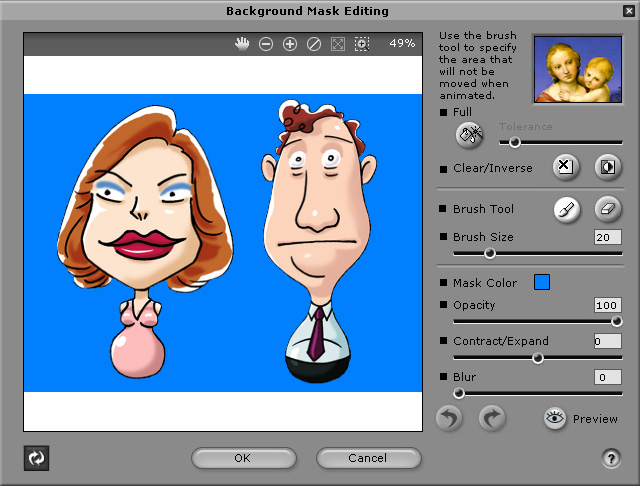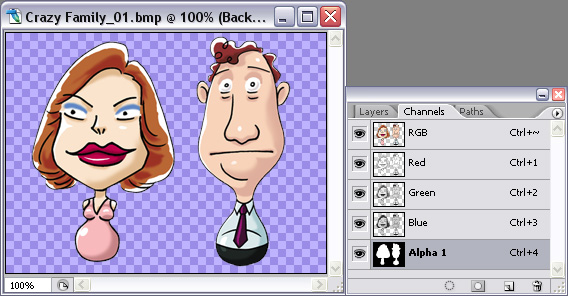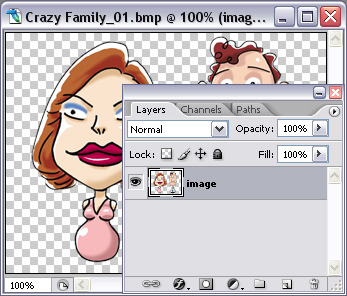 button to modify the background mask. The background mask, also
known as the alpha channel, controls the transparency of TGA or PNG images.
button to modify the background mask. The background mask, also
known as the alpha channel, controls the transparency of TGA or PNG images.
The background mask area is the area in the image that does not get moved or animated during playback of the animation script. There are two methods to generate a background mask for your image.
Click the Background Mask Editing
 button to modify the background mask. The background mask, also
known as the alpha channel, controls the transparency of TGA or PNG images.
button to modify the background mask. The background mask, also
known as the alpha channel, controls the transparency of TGA or PNG images.

Click the Full
button and click on the image to fill the area with the mask color. You can adjust the Tolerance slider to increase or decrease the background mask over the complete image area.
Click the Clear
button to delete the background mask.
Click the Inverse
button to invert the background mask area. The area that was previously defined as the background mask and the animated area are exchanged.
Use the Brush Tools to specify whether you want to increase or decrease the background area. Click the Paint
button if you want to enlarge the background area or add more parts to it. Click the Erase
button to erase parts of the background mask.
Adjust the Brush Size slider to increase or decrease the size of the brush tool. Use a thinner size when you want to change only small areas of the background mask. Alternatively, enter a number in the box next to the slider to specify the brush size.
Click Mask Color to specify the color for the background mask using the color palette. The mask color does not actually show up on the model; it is for your reference only.
Move the Opacity slider to specify the opacity of the background mask. The mask opacity does not actually show up on the model; it is for your reference only.
Move the Contract/Expand slider to contract or expand the background mask.
Move the Blur slider to blur the background mask.
Click the Preview button to view the results of your editing.
If you want to perfect the mask, you can save your desired image with pre-defined alpha channel by means of an external image editor and then load the image into CrazyTalk. The alpha channel information will be automatically applied as the background mask in the Background Mask Editing panel.

Adding and editing alpha channel in image editor (e.g. Photoshop)
Note:
The image with alpha channel information can be in 32-bit BMP, TGA or PNG format.
If you want to save the source image as PNG file, please remove the background layer, erase any unnecessary area of the image and save. You do not need to create an alpha channel layer in the Channels panel.
